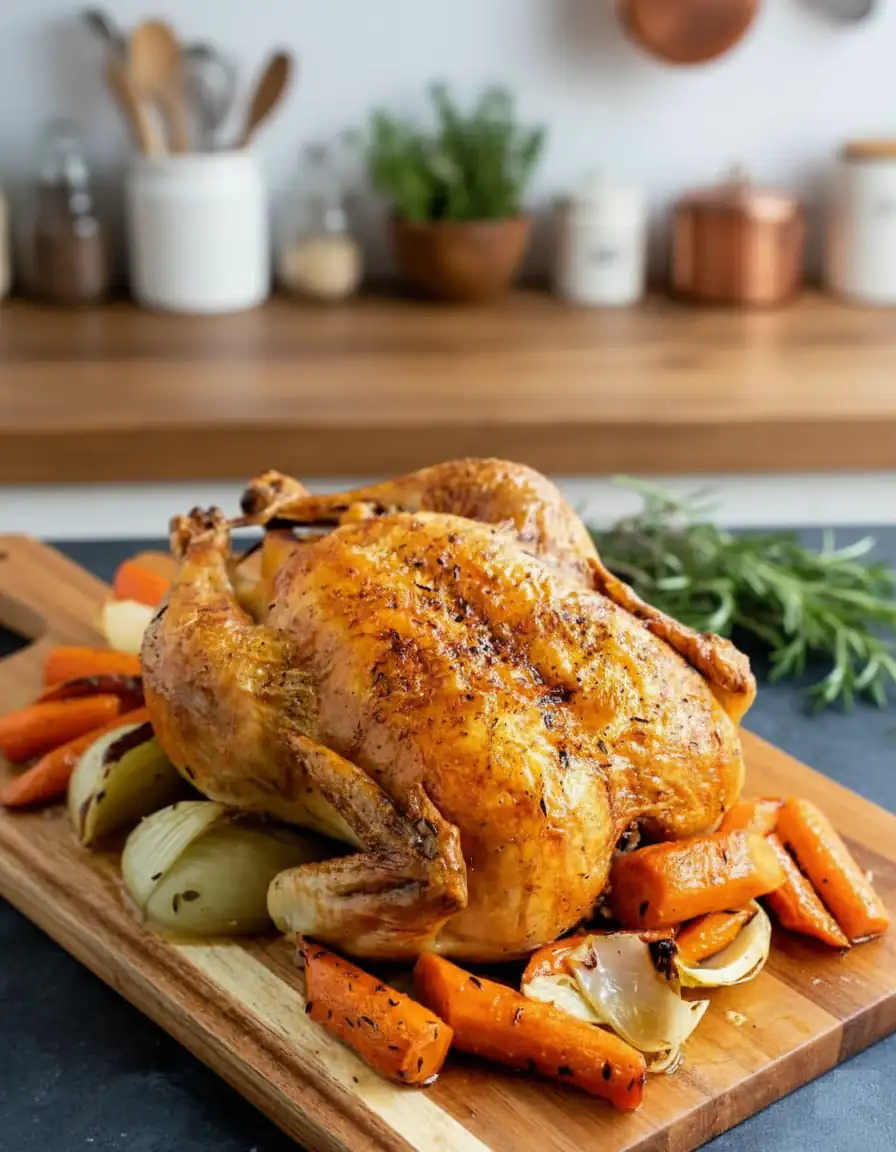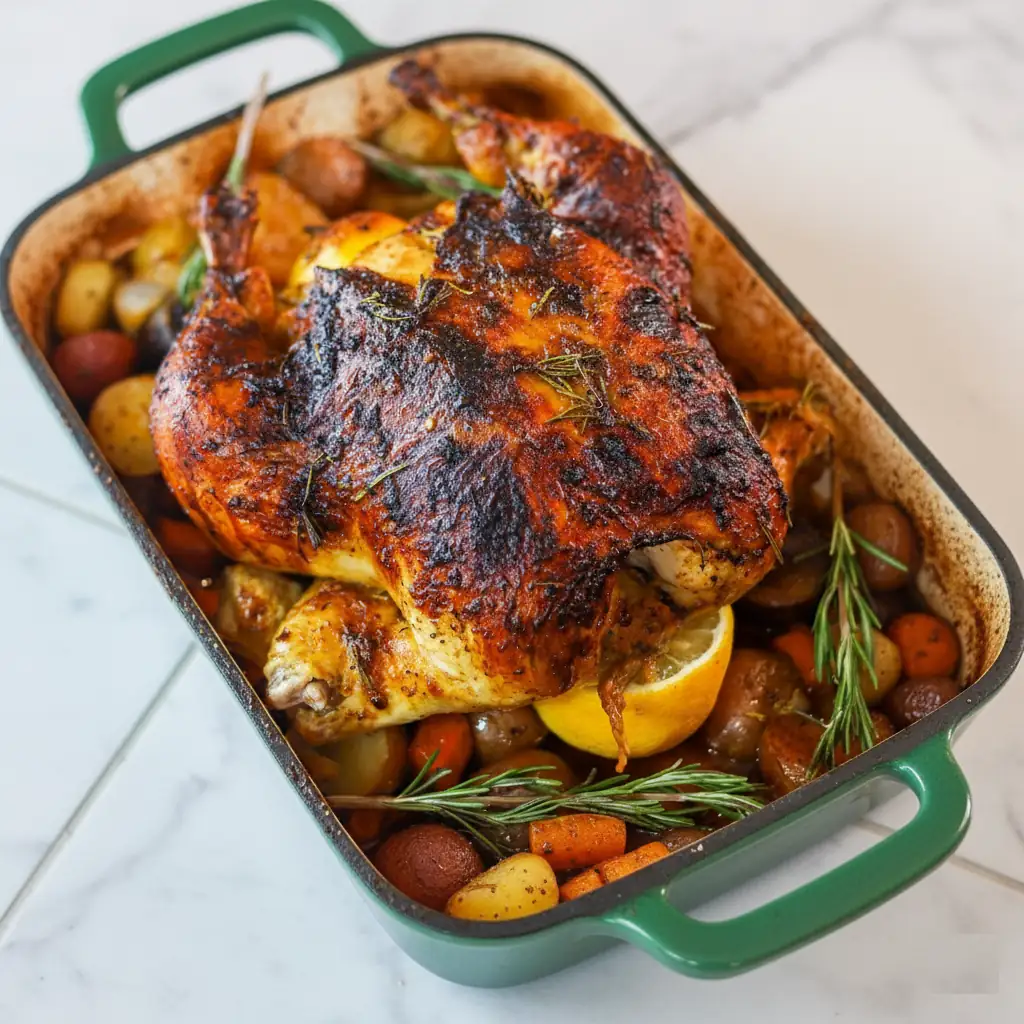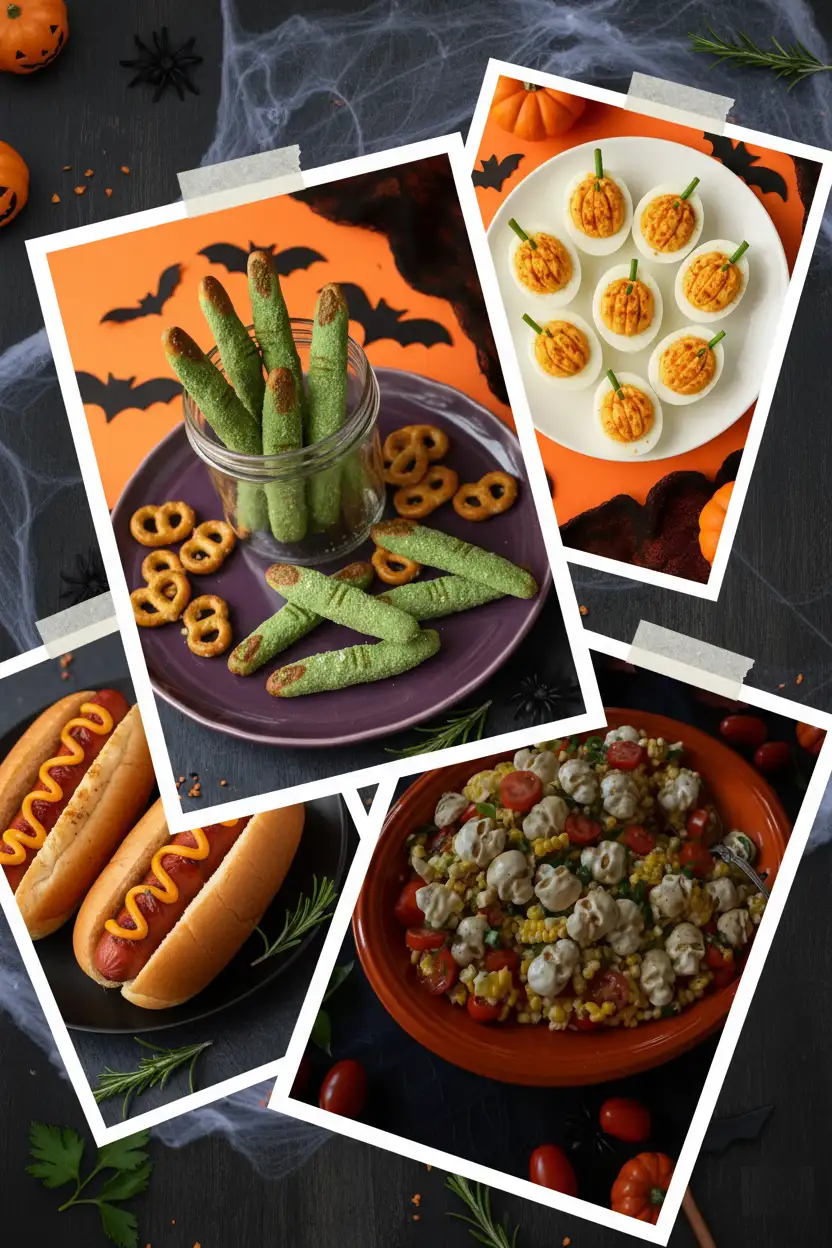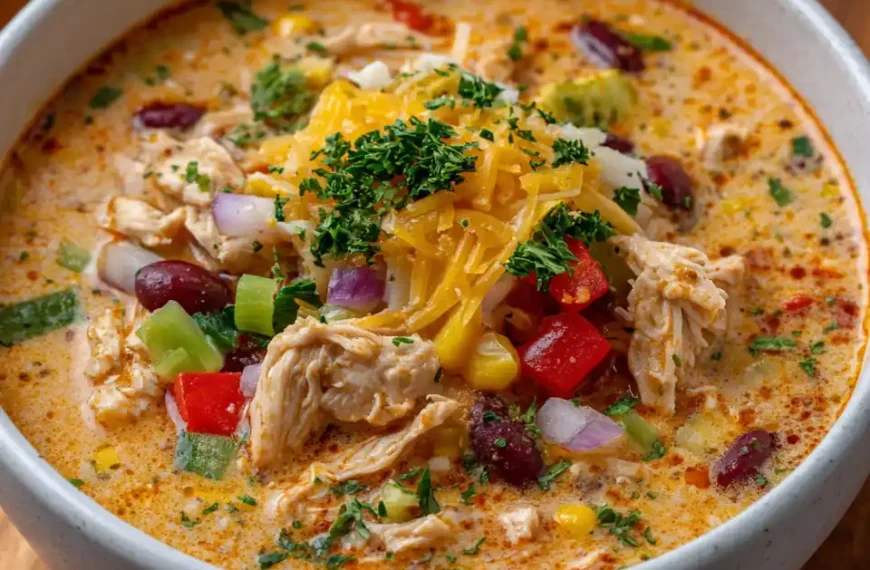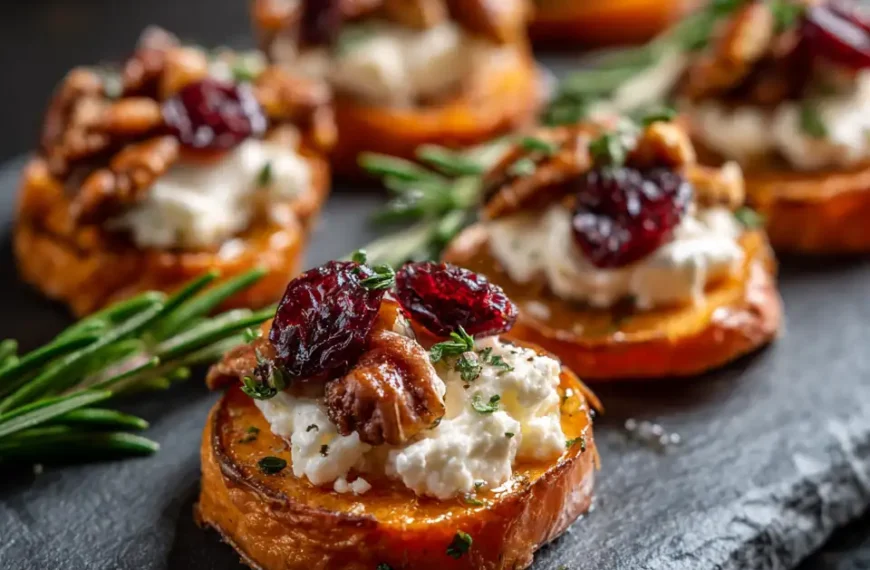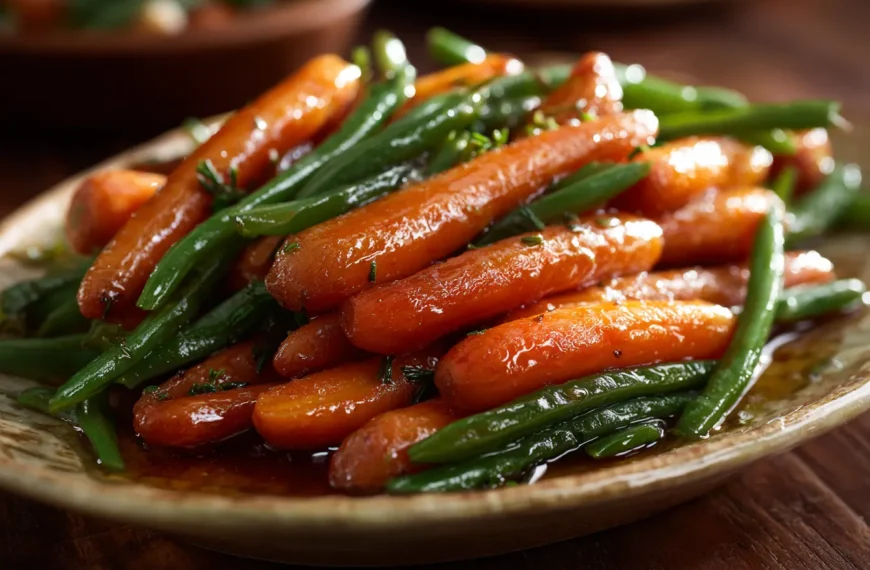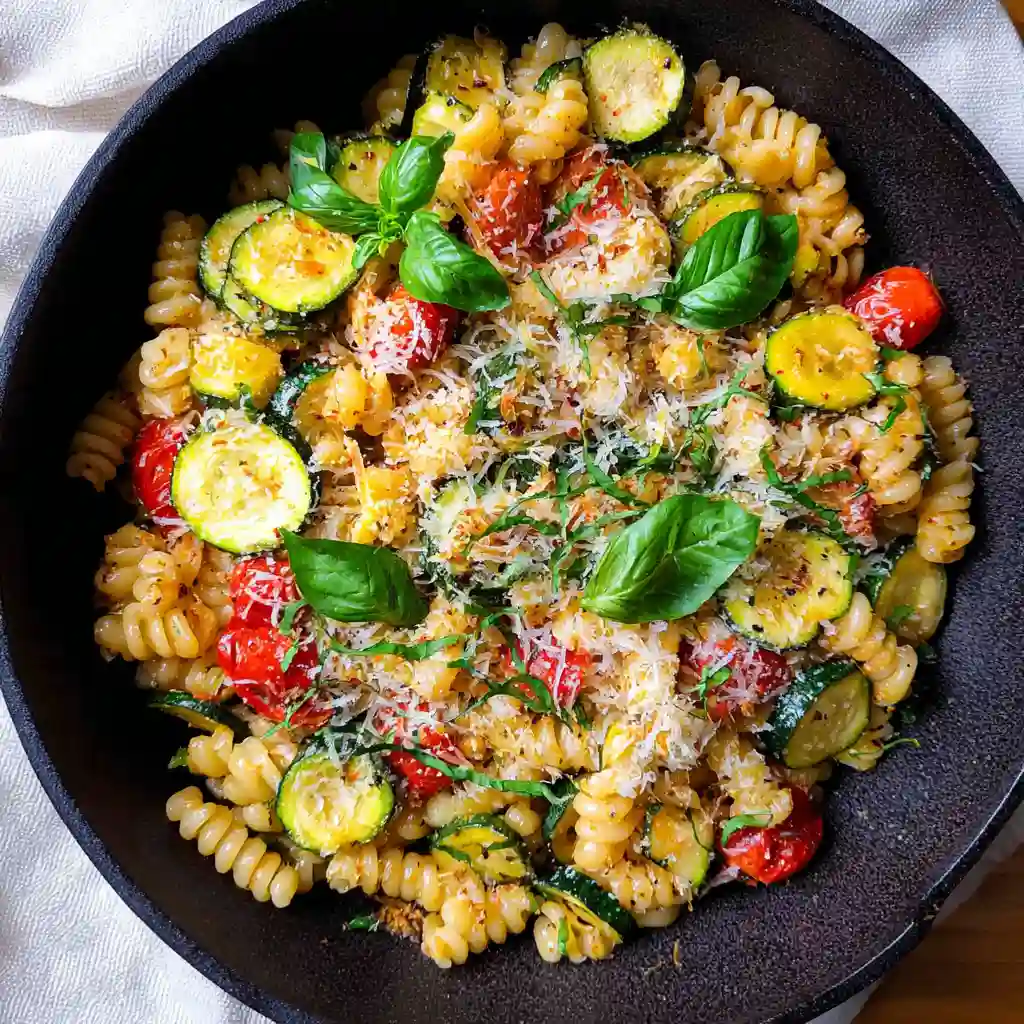Some recipes become iconic because they’re bold. Others become essential because they’re reliable. Ina Garten’s roast chicken? It’s both. This isn’t just any roast chicken—it’s the one that won over countless home cooks, graced many Sunday dinner tables, and even helped Prince Harry fall for Meghan Markle (yes, that’s the one).
There’s a reason this dish has a cult following. It’s simple but refined. Rustic yet elegant. The kind of meal that smells like home the moment it hits the oven but tastes like something you’d get at a French countryside inn. And that’s exactly the magic Ina brings—elevated simplicity done right.
The Roast Chicken That Changed Home Cooking
A Famous Bird with Humble Roots
Ina Garten didn’t invent roast chicken—but she made it a ritual. Her version stands out because it doesn’t rely on tricks or complicated techniques. It’s just good ingredients, thoughtful prep, and precise roasting. No gimmicks. Just a bird stuffed with lemon, garlic, and thyme, brushed with butter, and roasted on a bed of vegetables that pull double duty—acting as both flavor boosters and a natural roasting rack.
What makes it feel so iconic is that it’s not showy—it’s comforting. It’s what you make when you want something impressive without stress. It’s what you serve when you want to slow down and sit with family. And it delivers every single time.
Why Ina’s Method Works Every Time
It starts with proper seasoning—salt, pepper, butter—and plenty of aromatics. The bird is kept off the bottom of the pan, elevated by a bed of chunky onions, carrots, and fennel, which roast into caramelized perfection beneath it. Basting halfway and rotating the pan ensures even browning, and the final rest locks in every drop of juice.
Then there’s the gravy. It’s rich, smooth, and deeply savory, thanks to the drippings and a simple roux. Nothing fancy, just a pan sauce that feels like it belongs in a bistro.
Ina’s roast chicken isn’t trendy. It’s timeless—and that’s why it continues to win hearts, one golden bite at a time.
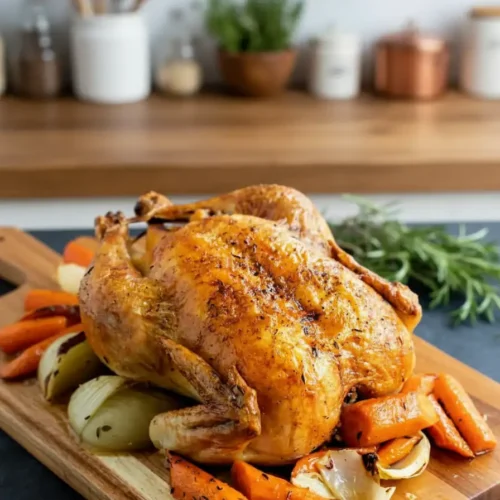
Ina Garten’s Roast Chicken
Ingredients
- 6 lb. whole chicken
- Salt/Pepper
- 1 large bunch thyme plus 20 sprigs
- 1 head garlic cut in half crosswise
- 1 lemon halved
- 2 Tablespoons butter melted
- 1 large yellow onion sliced into large chunks
- 4 whole carrots sliced into 4-inch chunks
- 1 bulb of fennel tops removed cut into wedges
- 2-3 Tablespoons Olive oil
- For the Gravy:
- 2/3 cup chicken broth
- 3 tablespoons butter
- 3 tablespoons flour
Instructions
- Note: An easy rule of thumb is that chicken takes about 15 minutes/pound to roast at 425° F.
- Roasting the Chicken
- Unwrap the chicken and remove the giblets and/or the neck (if included). Pat the chicken dry with paper towels.
- If possible, let the chicken sit at room temperature for 30-60 minutes to allow for more even cooking.
- Preheat the oven to 425° F.
- Seasoning the entire chicken generously with salt and pepper.
- Stuff the chicken with the thyme, garlic, and lemon.
- Brush the outside of the chicken with the 2 TBS melted butter and season again with salt/pepper.
- Use kitchen twine to tie the legs together. Tuck the wings underneath the body of the chicken.
- Place the sliced onions, carrots, and fennel bulb on the bottom of a roasting pan.
- Sprinkle the vegetables with salt, pepper, 20 sprigs of thyme, and drizzle generously with olive oil. Use your hands to toss to evenly coat the vegetables.
- Place the chicken on top of the vegetables. This prevents the chicken from sitting in its own juice while it cooks and elevates the chicken for even cooking.
- Roast (uncovered), for 1 ½ hours. Halfway through, use a spoon to drizzle the chicken with some drippings from the bottom of the pan. Rotate the pan 180 degrees and place it back in the oven.
- The chicken is done when the juices run clear and the internal temperature reads 165° F. (Place a meat thermometer into the thigh to check the temperature.)
- Let the chicken rest, uncovered, for 15-20 minutes to allow the juices to reabsorb before you cut into it!
- Slice and serve with the roasted vegetables.
- Making the Gravy
- Pour the chicken drippings into a large measuring cup.
- Top it off with chicken broth to make 2 cups.
- Melt 3 tablespoons of butter in a saucepan over medium heat.
- Add 3 tablespoons flour. Whisk for 1 minute.
- Add half of the gravy juice/broth. Whisk until there are no lumps.
- Add remaining liquid. Whisk for 2 minutes. The gravy will continue to thicken more and more.
- Season with salt/pepper if desired. Done!
- Note: If your chicken needs a touch more color, increase the heat to 500° and use foil to cover up any parts that are already sufficiently browned. Roast for an additional 5 minutes or so. Keep a close eye on it.
Notes
Use a roasting pan that fits the size of your chicken for best results. Using a roasting pan that’s too large runs you the risk of burning the vegetables and losing your liquid for the gravy.
Use plenty of thick cut vegetables (Large carrots, quartered onions, etc.). If there are too few or if they’re cut too thin, they’ll cook too quickly.
Gauge how your vegetables look at the halfway mark when you rotate the roasting pan. If they’re cooking too quickly, cover them with a layer of foil (but leave the chicken exposed).
An easy rule of thumb is that chicken takes about 15 minutes/pound to roast at 425 degrees.
Need more Browning?
If your chicken needs a touch more color, increase the heat to 500° and use foil to cover up any parts that are already sufficiently browned.
Roast for an additional 5 minutes or so. Keep a close eye on it.
Save Your Leftovers!
Save your leftovers to make easy homemade chicken stock!
You can even freeze your leftovers to make stock another day.
Ingredients That Do the Heavy Lifting
Lemon, Garlic, and Thyme: The Holy Trio
At the heart of Ina Garten’s roast chicken is a trio of ingredients that are simple yet powerful: lemon, garlic, and thyme. These aren’t afterthoughts—they’re flavor anchors.
When tucked inside the cavity of the chicken, lemon halves release their citrusy oils as the bird roasts, keeping the inside moist while gently infusing a bright aroma. Garlic, sliced in half crosswise, turns mellow and sweet as it steams from within. And fresh thyme—used both inside and over the vegetables—adds a subtle earthiness that keeps the whole dish grounded.
These three ingredients work like a slow perfume that seeps through the meat while creating a scent that fills your kitchen. You don’t need a marinade or a spice blend when you start with this much natural flavor.
Vegetables That Double as Roasting Support
One of the smartest parts of this recipe is how the vegetables serve more than one purpose. Thick-cut onions, carrots, and fennel aren’t just sides—they’re the base layer that props the chicken up. This keeps the bottom from getting soggy and ensures even cooking all around.
As the chicken roasts, its juices drip onto the vegetables, seasoning them from above. The olive oil and seasoning help them caramelize, not burn, and by the end of the roast, they’re rich, golden, and ready to serve right alongside the carved bird.
Using vegetables this way means less cleanup and more flavor. It’s an Ina move: simple, smart, and deeply satisfying.
Roasting Rules to Live By
Oven Timing, Basting, and Pan Rotation
Roasting chicken may feel intimidating if you’ve never done it before, but Ina’s method breaks it down into clean, repeatable steps. And it all starts with a high oven temp—425°F. This ensures that the skin gets golden and crispy while the inside stays moist.
Here’s the magic formula:
15 minutes of roasting per pound of chicken. For a 6-pound bird, you’re looking at about 1 hour and 30 minutes, give or take depending on your oven.
Halfway through, you’ll want to do two key things:
- Spoon the drippings over the chicken. This bastes the skin with flavor and fat, helping it brown evenly and stay juicy.
- Rotate the roasting pan 180 degrees. Most ovens have hot spots, and this simple turn ensures the bird browns evenly all over.
You’ll know it’s done when a thermometer inserted in the thigh (not touching bone) reads 165°F and the juices run clear. But don’t skip the final step…
The Gravy You’ll Want to Sip with a Spoon
Once the chicken is out and resting, you’re left with a pan full of flavor. That’s not just grease—it’s the base of a silky, rich gravy that brings everything together.
Here’s how to make it like Ina:
- Pour the drippings into a measuring cup and top off with chicken broth to make 2 cups.
- Melt butter, then whisk in flour to form a roux.
- Slowly add the drippings/broth mix, whisking to avoid lumps.
- Simmer for a few minutes until it thickens into a glossy, pourable sauce.
This gravy is smooth, savory, and subtly infused with lemon, thyme, and garlic—just like the chicken it came from. Drizzle it over sliced meat, spoon it over roasted veggies, or serve it on the side and watch it disappear.
Tips, Tweaks & Leftover Magic
Troubleshooting Common Roast Mistakes
Even a classic like this can go sideways if you’re not careful—but most issues have easy fixes. Here’s how to keep your roast chicken on track:
- Vegetables burning? That usually means your roasting pan is too large or the veggies are too thin. Use thicker chunks (think 4-inch carrot pieces, quartered onions) and a pan that hugs the bird snugly.
- Chicken not browning enough? Crank the oven to 500°F for the last 5–10 minutes. If parts are already golden, cover them loosely with foil while the rest catches up.
- Dry chicken? Be sure the bird rests uncovered for at least 15–20 minutes before slicing. This lets the juices redistribute and keeps them from leaking out when you carve.
A final tip from Ina herself: don’t skip the butter. That simple melted butter brushed on the skin at the start adds rich flavor and unbeatable color.
How to Turn Leftovers into Liquid Gold
When dinner’s done and the table is cleared, don’t toss the bones or scraps. What’s left from this roast chicken is pure flavor potential—especially for homemade stock.
Here’s how to do it:
- Toss the carcass, skin, any leftover herbs, and even roasted veggie bits into a stockpot.
- Cover with water, add a pinch of salt, and simmer low and slow for a few hours.
- Strain and refrigerate or freeze.
The result is a golden, aromatic stock that blows boxed broth out of the water. Use it for soups, risottos, or your next roast chicken gravy.
Ina’s roast chicken doesn’t just feed one meal—it sets you up for the next. And if you freeze the bones and scraps, you can make stock when you’re ready. It’s frugal, flavorful, and exactly the kind of practical elegance that defines Ina’s cooking.
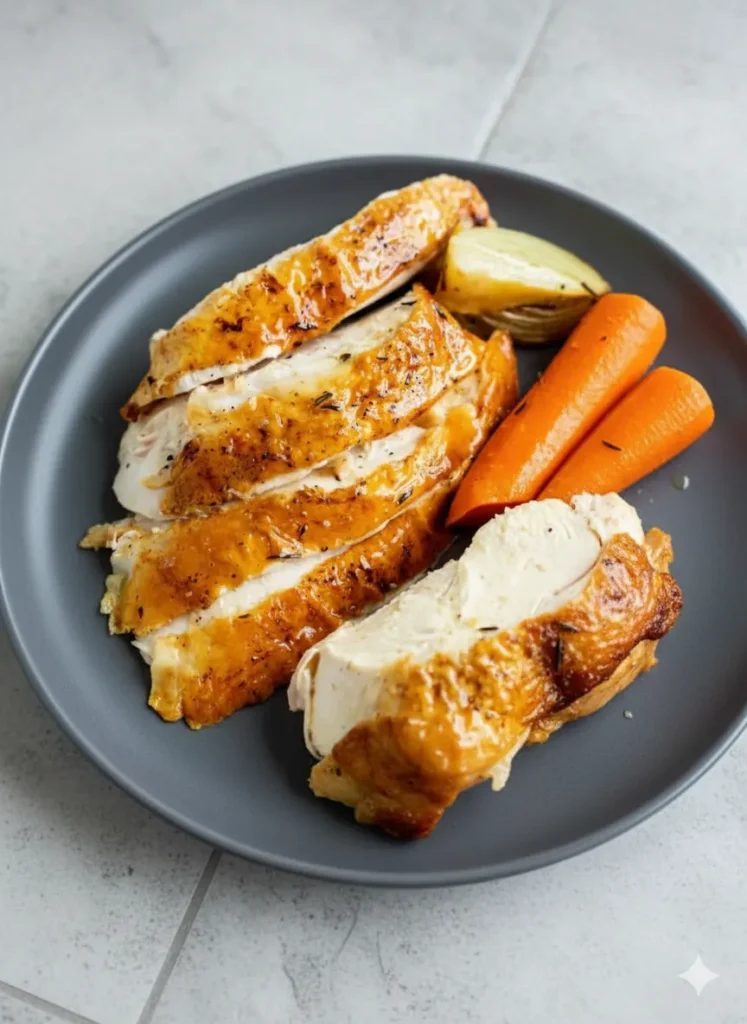
Frequently Asked Questions About Ina Garten’s Roast Chicken
What makes Ina Garten’s roast chicken recipe different?
Ina’s recipe stands out for its simplicity and reliability. She uses just a few fresh ingredients—like lemon, garlic, and thyme—to create deep flavor. The bird roasts on a bed of vegetables that act as a natural rack, allowing even heat circulation and infusing the veggies with savory drippings. It’s comforting, foolproof, and timeless.
Can I make Ina Garten’s roast chicken without fennel?
Absolutely. Fennel adds a mild sweetness and a touch of licorice-like flavor, but if you don’t have it or don’t enjoy it, feel free to substitute with more carrots, parsnips, or thick-cut celery. The dish still turns out beautifully without it.
How long does it take to roast a 6 lb chicken at 425°F?
You’ll want to roast it for about 90 minutes at 425°F, following the general rule of 15 minutes per pound. Use a meat thermometer to check for doneness—the thickest part of the thigh should register 165°F when it’s fully cooked.
What can I do with the leftovers from Ina Garten’s roast chicken?
Leftovers are perfect for chicken salad, sandwiches, or tossed into pasta. But the real gem is using the carcass to make homemade chicken stock. Simmer it with leftover vegetables and herbs, then freeze for soups and sauces. Nothing goes to waste.
Conclusion
Ina Garten’s roast chicken isn’t just a recipe—it’s a ritual. With its crisp skin, fragrant herbs, and tender meat, this dish is everything a home-cooked meal should be: simple, flavorful, and deeply comforting. Whether you’re serving it to impress guests or to anchor a quiet Sunday dinner, this roast delivers every time. And with leftovers that keep on giving, it’s proof that the best recipes are the ones that live on past the meal.
